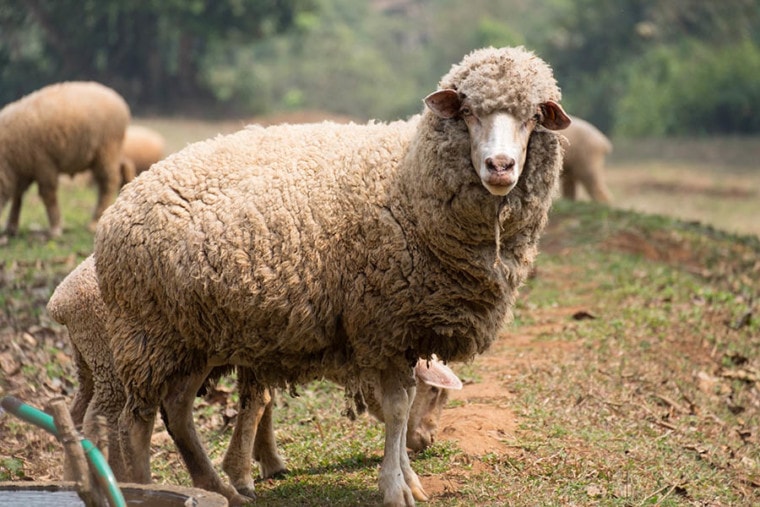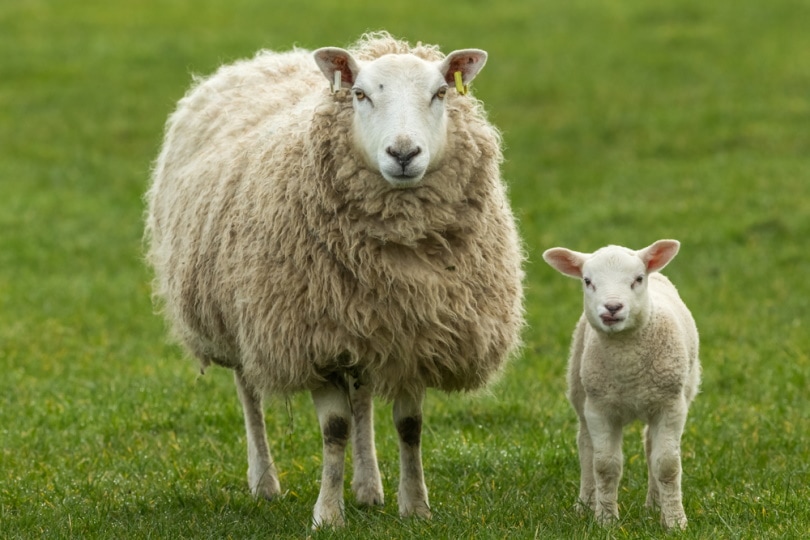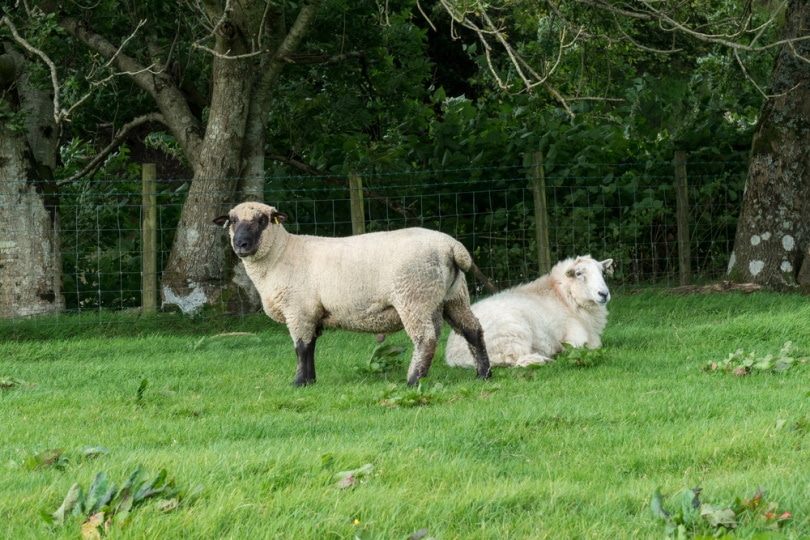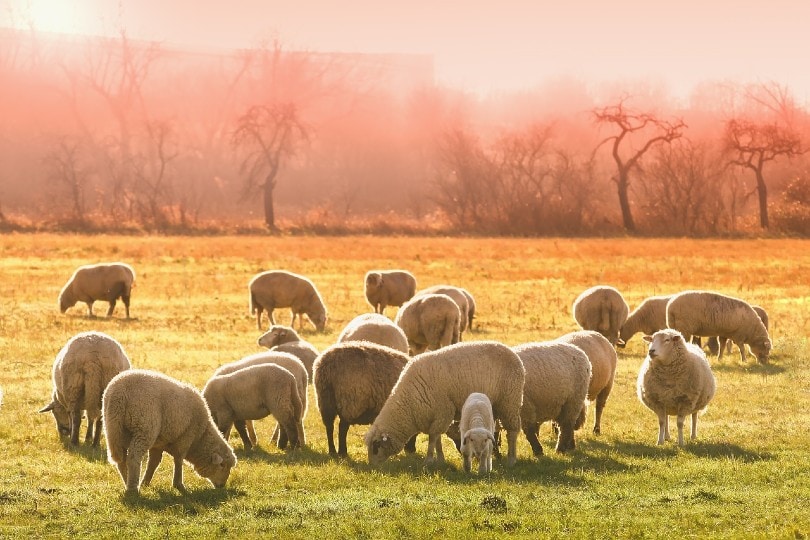
Note: This article’s statistics come from third-party sources and do not represent the opinions of this website.
Although sheep aren’t necessarily an animal that you see every day—maybe only in certain regions of the world—there are quite a lot of them. There are over 1 billion sheep in the world! They are useful, as we can get wool and meat from these animals. Despite there still being a large number of sheep in the United States and worldwide, there aren’t quite as many as there used to be.
Even though sheep can provide tasty meat, sheep meat is not something that most people eat regularly the way that they do chicken and beef. And even clothing made from wool isn’t quite as popular as it used to be, with people leaning toward cheaper or artificial alternatives made from cotton or polyester.
Could the population of sheep be declining because they’ve outlived their usefulness? Or is it simply due to people switching to cheaper alternatives instead of products produced by sheep? Continue reading as we look at some of the statistics surrounding the sheep population, including how many are left in the world as well as what they are being used for today. Our statistics are arranged in the following categories:
- Sheep Population Statistics
- Sheep Wool and Meat Production Statistics
- Sheep Slaughter and Death Statistics

The 12 Sheep Statistics
- There are over 1 billion sheep in the world.
- There are over 5 million sheep in the United States.
- There are more than 50 sheep breeds in the United States and around 900 worldwide.
- A single sheep can produce up to 10 pounds of wool per year.
- Australia is the leading producer of wool, producing about one-quarter of the world’s wool.
- Two-thirds of sheep production in the U.S. is located in the Southern Plains, Pacific, and Mountain regions.
- Over 75% of sheep farming operations in the U.S. raise sheep for meat.
- Lamb and mutton consumption in the United States was around 1.1 pounds per capita in 2020 and that amount is expected to hold steady.
- Along with beef, lamb and mutton production has one of the worst impacts on the environment, using 39.72 kg of carbon dioxide equivalents per kilogram of meat.
- Sheep wool production contributes to only about 0.5% of the global supply of textile fibers.
- Half a billion sheep are killed each year for consumption.
- Around 8 million sheep die each year from causes other than slaughter.


Sheep Population Statistics
There are over 1 billion sheep in the world.
(University of Kentucky)
Of all of the countries in the world, China has the most sheep. What’s interesting is that despite having the most sheep, they are not the top wool-producing country. That title goes to a different country, which will be discussed in more detail later.

There are over 5 million sheep in the United States.
(USDA)
As of the end of 2020, there were 5.2 million sheep in the United States. This number is down 1% from the 2019 numbers, and down significantly from when the sheep population peaked in 1884 at approximately 51 million.
There are more than 50 sheep breeds in the United States and around 900 worldwide.
(University of Kentucky)
When we see those fluffy white animals, most of us just say, “Oh look! A sheep.” They aren’t like well-known dog breeds in which we can say, “That’s a German Shepherd,” or “That’s a Golden Retriever.” But there are, in fact, different breeds of sheep that produce different types of wool and meat. However, it’s still pretty hard to tell the difference between them unless you’re experienced.

Sheep Wool and Meat Production Statistics
One sheep can produce up to 10 pounds of wool per year.
(International Wool Textile Organization)
Each sheep is capable of producing 9.9 pounds (4.5 kg) of wool per year. This would be enough wool to cover an entire large sofa or make up to 10 articles of clothing. With over 1 billion sheep in the world, there certainly isn’t a lack of wool fabric.

Australia is the leading producer of wool, producing about one-quarter of the world’s wool.
(Woolmark)
Australia produces about one-quarter of the world’s wool, at over 760 million pounds (345 million kg). China, Russia, New Zealand, and Argentina follow behind Australia as other leading wool-producing countries. About 98% of Australia’s wool gets exported to other countries to be made into fabric and clothing.
Two-thirds of sheep production in the U.S. is located in the Southern Plains, Pacific, and Mountain regions.
(USDA)
Texas is the largest sheep-producing state in the United States, followed by California. This fact has pretty much remained constant since the early 1900s.

Over 75% of sheep farming operations in the U.S. raise sheep for meat.
(USDA)
Some breeds of sheep are bred specifically for their wool while others are bred for their meat, and some are bred for both. 81.6% of sheep operations in the U.S. raise sheep for meat as opposed to 15.8% for wool. Additionally, some sheep farmers raise sheep for more than one purpose.
Lamb and mutton consumption in the United States was around 1.1 pounds per capita in 2020 and that amount is expected to hold steady.
(Statista)
The per capita consumption of lamb and mutton, meaning the amount of lamb and mutton consumed per person, has held at 1.1 pounds since 2016, up from 1 pound in 2015. That number is expected to hold steady from 2020 until 2030.
Along with beef, lamb and mutton production has one of the worst impacts on the environment, using 39.72 kg of carbon dioxide equivalents per kilogram of meat.
(Our World in Data)
Producing lamb and mutton produces the second-most greenhouse gas emissions behind beef, producing 99.48 kg of carbon dioxide equivalents per kg of meat. However, lamb and mutton production occupies the most land at 369.81 meters squared per kilogram.

Sheep wool production contributes to only about 0.5% of the global supply of textile fibers.
(Oxford Academic)
Polyester makes up 51.5% of the global supply of textile fibers and cotton makes up 24.4%. Wool production and demand have. The demand for wool is down due to consumers not being willing to pay the higher price when there are cheaper alternatives and the casualization of workwear in which wool clothing isn’t being worn as much.

Sheep Slaughter and Death Statistics
Half a billion sheep are killed each year for consumption.
(World Economic Forum)
The human population has doubled in the last 50 years, but meat consumption has tripled during that same time frame. About half a billion sheep are sent to slaughterhouses each year, but that number isn’t nearly as high as the number of chickens (50 billion) and pigs (1.5 billion) that are slaughtered each year.

Around 8 million sheep die each year from causes other than slaughter.
(World Animal Foundation)
Other than being slaughtered, some of the leading causes of death in sheep include disease, lack of shelter, and neglect. Around one million of these deaths occur within 30 days after shearing. Many lambs also die each year before the age of 8 weeks due to cold or starvation; this number is usually around 20%-40% of the population.






.jpg)